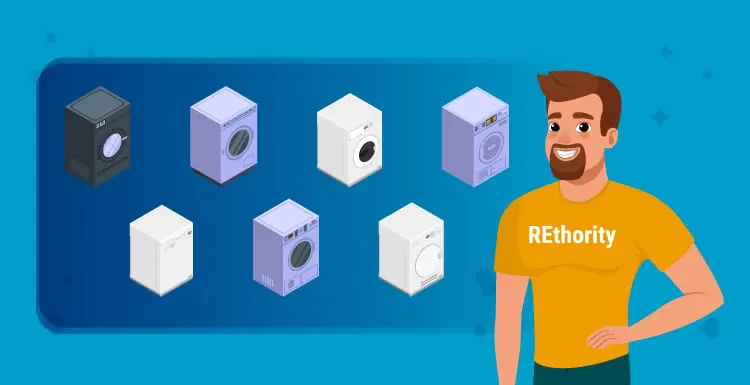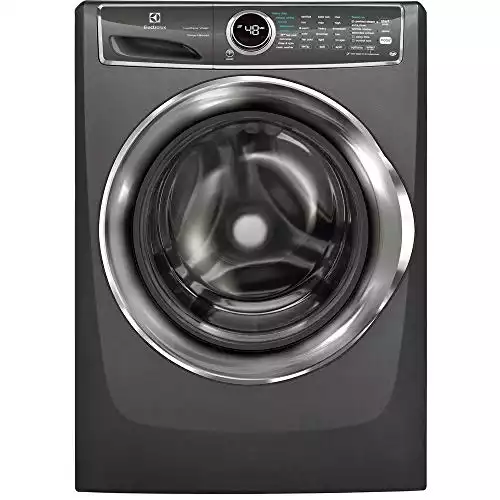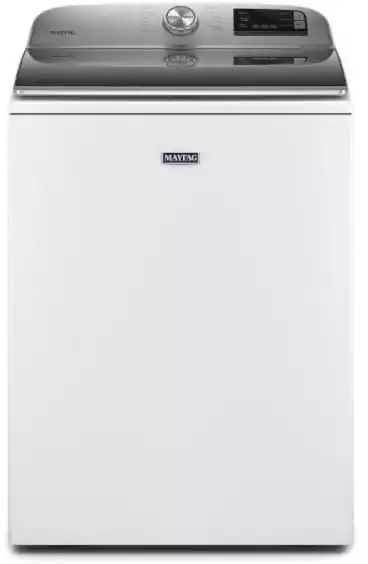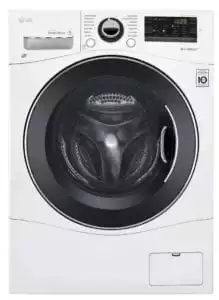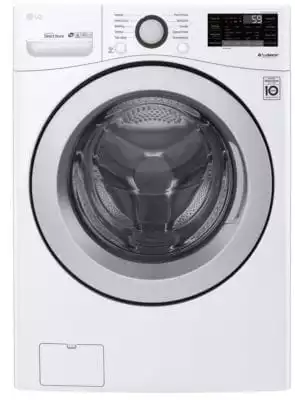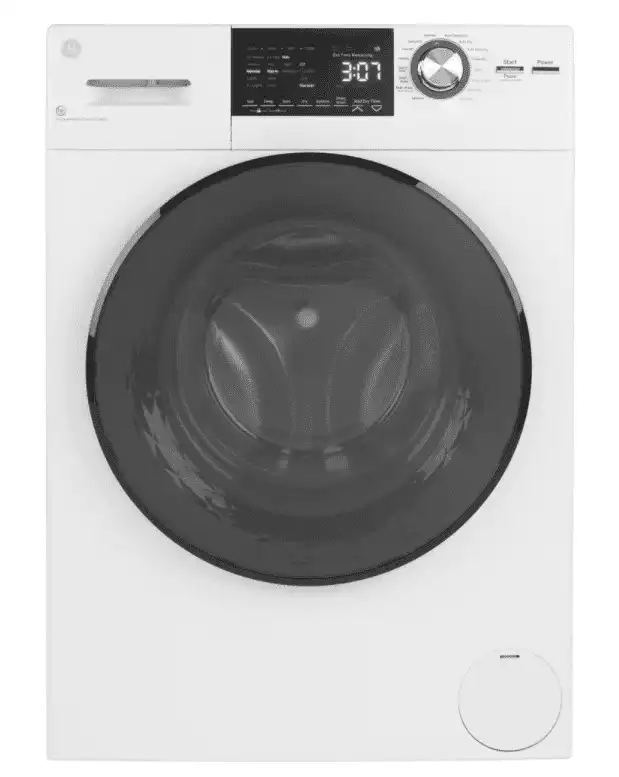Looking for a complete guide to the best washer and dryer sets? If so, read on.
We’ll cover the top models, their features, our thoughts on each, and things to consider before buying.
Top Picks At a Glance
- Best Front-Load Washer: Electrolux Front-Load Washing Machine
- Best Top-Load Washer: Maytag Smart Capable Top-Load Washing Machine
- Best Gas Dryer: GE Smart 120-Volt White Stackable Gas Vented Dryer
- Best Electric Dryer: LG Electronics Smart White Electric Dryer
- Best Washer and Dryer Combo: GE High-Efficiency Electric Washer and Dryer Combo
5 Best Washer and Dryers on the Market
When you’re about to spend a few hundred dollars on a new washer or dryer, you want one that will meet your needs, fit your budget, and last for a long time.
There are countless models on the market today, and it’s a challenge to wade through them all. So how can you be sure you’re really choosing the best?
Whether you’re looking for a top load, front load, electric, gas, large capacity, or compact appliance, we’ve got some great options for you to see. We’ve compiled our top five washing machines and dryers that get great reviews, so check all the boxes.
We’ve also created a complete buyer’s guide to help you get “a load” of information on the most important criteria to consider as you shop around. But first, we’ll start with our top five picks for the various types of washers and dryers available to you.
1. Best Front-Load Washer: Electrolux Front-Load Washing Machine With SmartBoost
A solid front-load washer for households seeking energy-efficiency.
TOTAL: 19/20
- Performance: 4/4
- Energy Efficiency: 4/4
- Capacity: 4/4
- Cycle Time: 4/4
- Cost: 3/4
Key Features
- 4.4 cu. ft.
- Nine wash cycles
- 1300RPM spin speed
- ENERGY STAR: Yes
- CEE Tier: 3
The Electrolux 4.4 cu. ft. Front Load Washer with SmartBoost Technology Steam takes the cake among front-load washers.
There isn’t much this thing can’t do, aside from drying your clothes. With a roomy 4.4 cu. ft. capacity, you can fit large loads like king-size bedding inside for a thorough wash.
The stainless steel tub is gentle on clothes and backed by a 10-year warranty. And with the SmartBoost feature, your detergent premixes with water to boost the cleaning power and penetrate all fabrics evenly.
It’s the world’s first front-loader with an adaptive dispenser for detergent, designed to accept powder, liquid, or pods.
Use the LED controls to choose from nine wash cycles with one touch, including a crazy-fast 15-minute option that power cleans a full load in a fraction of the time. An included Perfect Steam function gets garments sanitized and cleaned without wrinkles.
But that’s just the beginning. This machine automatically adjusts the water level based on the size of the load you add. You can activate Delay Start mode to keep laundry on your schedule.
Never blindly search for specific articles of clothing with the included Luxury Design LED lighting inside the tub.
And the reversible door makes it easy to open the door to the right or left, whichever is best for your laundry room. Best of all, you can use these features and still slash your energy bill because it’s both Energy Star and CEE certified. This model costs less than $1,000.
2. Best Top-Load Washer: Maytag Smart Capable Top-Load Washing Machine
This is a "smart" choice for those seeking to automate their wash cycles.
TOTAL: 18/20
- Performance: 4/4
- Energy Efficiency: 3/4
- Capacity: 4/4
- Cycle Time: 3/4
- Cost: 4/4
Key Features
- 4.7 cu. ft.
- 11 wash cycles
- 750RPM spin speed
- ENERGY STAR: No
- CEE Tier: N/A
The Maytag 4.7-cu.-ft. Smart Capable Top Load Washing Machine is a powerhouse. It uses an agitator to get clothes extra-clean and comes with a handy Extra Power button for heavy-duty soils. This is part of what earned it the title of the most powerful cleaner in its class.
That Extra Power button adds a blast of hot water to a cold wash to reactivate detergents and boost stain-fighting power.
There’s 4.7 cu. ft. of space inside, enough for up to 19 towels at once. But wash cycles won’t take forever and a day with this model, which features a Quick Wash cycle that completes cleaning in 30 minutes.
When you quick wash, this machine automatically goes into a high-powered spin mode to wring out more water, so drying moves just as quickly. Use the auto-sensing feature to ensure the perfect amount of water is added every time.
If you’re in no hurry and want the deepest clean you can get, the Deep Fill option lets you add more water to the wash basket and increase the agitator’s cleaning power. Peek in anytime to check the progress through the slow-close glass lid on top.
It’s a top loader with an agitator, but it is not your grandmother’s dryer. Optional smart features allow it to connect to WiFi, so you can manage and monitor your laundry from the kitchen, at work, or on the road.
And if something goes wrong, you’re covered by the 10-year parts warranty. It’s not ENERGY STAR certified, but it uses about 341 kWH/year, which is comparable to other ENERGY STAR certified appliances. At a price point of around $800, overall, this one is a winner.
3. Best Gas Dryer: GE Smart 120-Volt White Stackable Gas Vented Dryer
This is one of the best gas dryers for homes that have not yet converted to electricity.
TOTAL: 19/20
- Performance: 4/4
- Energy Efficiency: 4/4
- Capacity: 4/4
- Cycle Time: 4/4
- Cost: 3/4
Key Features
- 7.8 cu. ft.
- Ten dryer cycles
- Smart Home enabled
- ENERGY STAR: Yes
- CEE Tier: 1
The GE Smart 120-Volt White Stackable Gas Vented Dryer is our number-one pick for gas dryers. This is an efficient appliance with 7.8 cubic feet of ample space inside for large loads, powerful drying ability, and smart home connectivity with built-in WiFi.
Get your freshly washed clothes even cleaner with the sanitizing setting that raises the temperature to kill off germs and bacteria.
But make sure the temperature never gets hot enough to damage your clothes, thanks to the HE Sensor Dry feature that constantly tracks the temperature and moisture level.
When you’re in a hurry, opt for the Quick Dry setting to get the entire load dried in less than 23 minutes.
For clothes that are ready-to-wear right out of the dryer, the wrinkle care setting is great. We like the reversible door that swings open to the right or left, depending on your laundry room layout.
With the built-in WiFi, there’s no need to hover around waiting for your clothes to finish drying. You’ll get notifications and the ability to start and stop the cycle from a smart home device or your smartphone.
You’ll appreciate the energy savings you’ll see from this Energy Star and CEE-certified appliance that runs on natural gas.
It’s also ADA-compliant. With an included 1-year limited warranty, you’re covered for any defective parts for the first 12 months. It’s priced around $899, so it’s well within the average price range for gas dryers.
4. Best Electric Dryer: LG Electronics Smart White Electric Dryer
Dry clothes faster while also saving money on your monthly energy bills.
TOTAL: 18/20
- Performance: 4/4
- Energy Efficiency: 3/4
- Capacity: 3/4
- Cycle Time: 4/4
- Cost: 4/4
Key Features
- 7.4 cu. ft.
- Eight dryer cycles
- SmartDiagnosis enabled
- ENERGY STAR: No
- CEE Tier: N/A
The LG Electronics Smart White Electric Vented Dryer with Sensor Dry is the top option in its class. It comes with a host of features that not only get clothes dry faster but also save money on energy costs and allow larger loads to be dried at once.
Take the Sensor Dry feature as an example. It senses any remaining moisture in the load to ensure the dryer stops as soon as everything is toasty and dry. This helps avoid damaging clothing at too-high temperatures and keeps the appliance from wearing out too soon.
If you know you’ll be ironing clothes after pulling them out, just select the EasyIron option to lightly mist clothes right before you take them out.
Or, if you want to dry clothes faster, choose the SpeedDry option to have them ready in just 15 minutes. The FlowSense indicator lets you know the moment the dryer senses that the lint ducts need cleaning.
This is a safety feature that helps prevent fires, keeps energy bills low, and helps the dryer run with greater efficiency. The large 7.4 cubic foot capacity fits big loads of laundry and has enough room to tumble them around for a faster dry.
Do fewer loads by fitting everything in at once. Though it’s not technically Energy Star certified, it actually uses 20% less energy than the certification’s minimum requirements.
For quiet operation, this is the top pick. It’s whisper-quiet until the end of the cycle, when you’ll hear a chime that alerts you that it’s done.
With SmartDiagnosis, you can troubleshoot through the app or over the phone to quickly get to the heart of the problem. At less than $600, this is a great deal for a reliable dryer.
5. Best Washer and Dryer Combo: GE High-Efficiency Electric Washer and Dryer Combo
A solid all-in-one washer and dryer for tight spaces or Airbnb rentals.
TOTAL: 17/20
- Performance: 4/4
- Energy Efficiency: 3/4
- Capacity: 2/4
- Cycle Time: 4/4
- Cost: 4/4
Key Features
- 2.4 cu. ft.
- 14 wash and dryer cycles
- 1450RPM spin speed
- ENERGY STAR: No
- CEE Tier: N/A
The GE High-Efficiency 120-Volt Ventless Electric All-in-One Washer and Dryer Combo isn’t the least expensive appliance on this list, but it’s definitely the most functional.
It’s a washing machine and dryer combo, but unlike most stackable options, this appliance is truly “all in one.” It’s electric, and there’s no vent required. So you can plug it into any standard 120-volt outlet.
You won’t get the large capacity that other washers and dryers offer at just 2.4 cubic feet, but for smaller loads or single large items, it’s more than enough to get the job done. The way it works is simple.
You add your laundry, detergent, and fabric softener, choose the wash cycle you want, and it automatically picks the corresponding dry cycle to go with it. Since there are 14 wash and dry cycles, you can pick the one that is best for the load you’re washing and drying.
A handy steam wash setting gets clothes ultra-clean and helps remove tough stains. The sanitizing setting gets extremely hot to disinfect and kill bacteria and germs that would otherwise linger.
For anyone who forgets to add something to the wash and hates waiting for the next load, the Add a Garment feature lets you stop the cycle long enough to add something in, then picks up where it left off.
Take advantage of this washer/dryer’s 5-5-5 selections: 5 spin speeds, five temperatures, and five soil levels. You can truly customize every load with this combo!
It comes with a 1-year warranty that covers the entire appliance, which is a big deal. At around $1,200 for both the washing machine and dryer functionality, we think this is the best deal around for a combo appliance.
Washer and Dryer Buying Guide
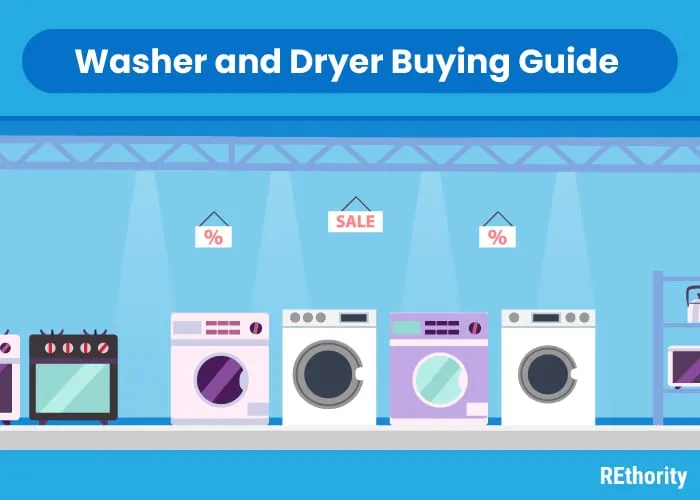
Now that we’ve shown you the five best washers and dryers on the market, let’s take a closer look at the criteria you should use to make your final decision.
Shopping around should start with a little research. Be sure to read through our guide to make a more informed decision on your purchase.
Know How to Judge Performance
You don’t want to end up with an appliance that just doesn’t work well. Knowing how to judge a washer and dryer’s performance will help you ensure you find the best-performing appliance within your budget.
Washer Performance
Without the chance to actually test out a washing machine, how can you judge how well it will perform? Luckily, there are some important specifications you can look for to get an idea of how well one will work.
Look at the wash cycles the machine offers, any special features that might be useful for you, and the spin speed to see how well it might perform. Some washing machines have specific wash cycles for bulky items, quick wash, activewear, delicates, permanent press, and more.
The more wash cycles it has, the more options you’ll have for your laundry. This means you’re able to customize the wash cycle to protect and prolong the life of your clothing and fabrics.
Special features to look out for include steam treatments, automatic temperature control, smart-connect capabilities, and a delay start option. The washing machine’s spin speed is also an important performance indicator because it relates to how quickly the clothes will dry.
Washers with a high spin speed wring more water out of the load before it goes into the dryer. That means you’ll end up with clean, dry clothes faster and waste less energy running your dryer in the process.
The average maximum spin speed is anywhere from 1,000 RPM to 1,800 RPM, but it can be lower or higher.
Certain fabrics actually need a slower spin speed to avoid damage (like wool), while synthetics and cotton can handle the highest speeds. Choosing the right wash cycle will allow the washer to adjust its spin speed automatically.
Dryer Performance
A dryer’s performance level can be estimated by looking at a few key indicators. Overall, you want to know that it will adequately and quickly dry your clothes without wasting energy or getting too hot for the items inside.
One way to judge dryer performance when shopping around is to look at the available settings. If there are plenty of dryer settings to choose from, you’ll know that you’ll have good control over the heat level and cycle length.
But even if you see only the most basic options, like a Start/Stop button and a cycle selection dial, it doesn’t necessarily mean that the dryer won’t work well.
Reading the owner’s manual will show you the temperature differences between settings, cycle lengths, and which fabrics to avoid drying. Make sure to check the labels on your clothing, too.
Special features a dryer might come with are also important to check out. Like a digital display, some may look impressive but do very little in the way of improving performance. Others, like the option to delay start, can prove really useful and make your dryer that much easier to use.
Pay Attention to Energy Efficiency
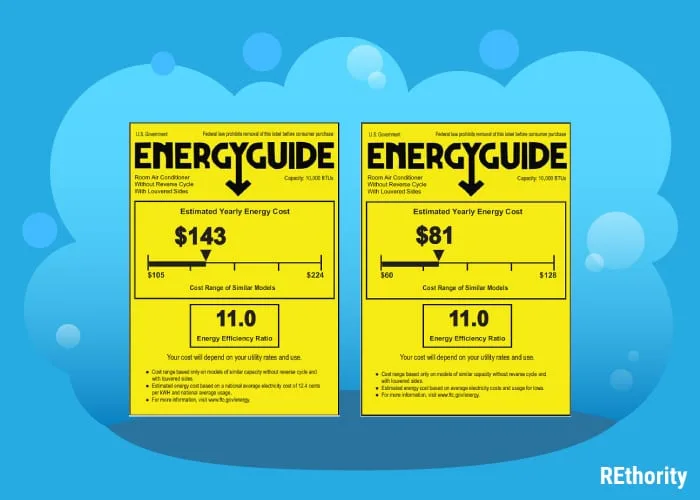
Both washing machines and dryers are appliances that tend to use a lot of energy. Many of us opt for energy-efficient versions of these appliances to save on energy costs and use less water.
You can always look for the Energy Star certification label, but there are other ways to see how energy efficient an appliance is. The Consortium for Energy Efficiency (CEE) Tier Rating is a great example.
Appliances rated as CEE Tier 1 are within the top 25% of the most energy-efficient appliances. If it meets Tier 1 requirements, it also meets Energy Star requirements. The CEE ratings go to Tier 4, which indicates an extremely energy-efficient appliance.
To earn either of these certifications or ratings, an appliance has to meet really strict requirements. So look for ENERGY STAR or CEE Tier ratings to find a washer or dryer that is proven to be energy efficient.
Check the Washer and Dryer Capacity
The overall capacity of a washing machine or dryer is an important consideration. Your household size, average laundry load size, and laundry habits all factor into choosing the capacity that will be right for you.
Washer Capacity
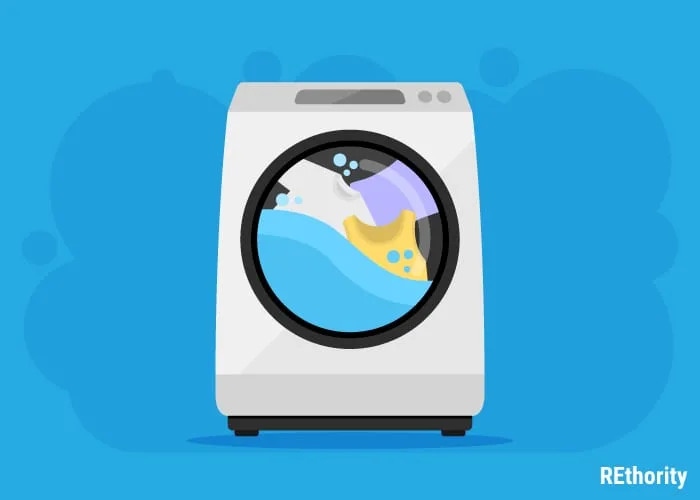
A washing machine’s capacity is more than just its overall size (though that’s important, too). It must be able to fit into the spot you’ll be installing it, but it also needs to be able to handle the average laundry load size you’ll be doing.
Washing machine capacity is measured in cubic feet (cu. ft.), and you’ll be able to easily compare multiple washers using this measurement.
The trick to choosing between different washing machine capacities is to look for one that closely fits your needs and isn’t too small or too large.
If you’re single or living with one other person, you may be able to use a compact washing machine with a capacity of around 1.5 cubic feet. If you have a family or household with 3 to 4 people living in it, any average-sized capacity should be adequate.
For top-loading washers, that’s anywhere from 3.1 to 4 cu. ft. For front-loaders, it’s anywhere from 4.2 to 5 cu. ft. If you’re tempted to opt for more capacity than you really need, reconsider. A too-big washer will only drive your energy (and detergent) costs up.
Plus, regularly underfilling a large washing machine will cause your tub to spin off-balance, fail to register the load and spin at all, and make loud noises as the tub moves irregularly. Buying a washing machine that is too small for your needs is just as bad.
You’ll end up running more cycles to finish your laundry, which drives energy costs up and burns out the washer components faster.
It can also result in incomplete cleaning as the clothes are squished together and unable to move around in the detergent. Poor draining also results from too many clothes blocking the drain opening.
Dryer Capacity
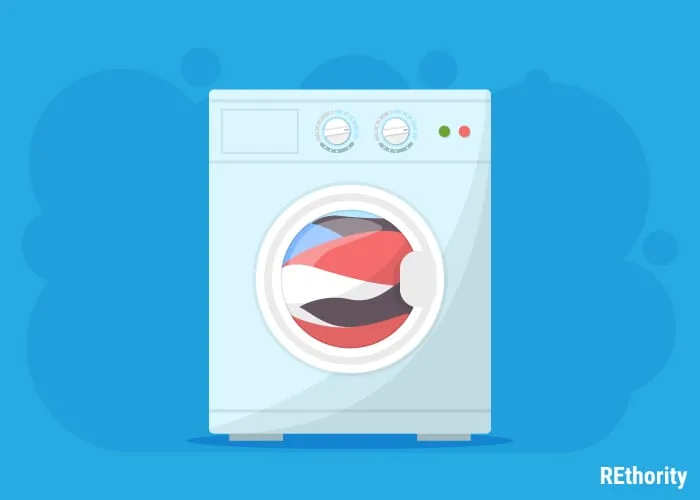
Your dryer’s capacity is also an essential thing to think about when you’re on the hunt for a new one.
The average dryer capacity (the drum size) is anywhere from 7.3 cu. ft. to 8.3 cu. ft., but compact dryers can be as small as 3.4 cu. ft. Larger capacities exist, usually called “mega-capacity.”
Most households don’t need a dryer that large, but if you have a big family or regularly wash large, bulky items (like king-size comforters), it’s something to consider.
Dryer capacities are larger than washing machines’ because they have to leave extra room for the clothes to tumble around in the heat to dry evenly.
It also enables the heat to reach the clothes more readily without wasting energy. So even if you opt for a compact washing machine of just 1.4 cu. ft. capacity, your compact dryer will need to be at least 3.4 cu. ft. to accommodate the same size loads for drying.
Research the Cycle Times
Cycle times are easy to forget about when you’re actively shopping for a new washing machine or dryer and thinking about the cost, performance, and energy efficiency. But the moment you get it installed and run your first load of laundry, cycle times will be very important.
No one wants to wait around 30 minutes longer than normal for a cycle to finish! Here’s what to consider about cycle times when you’re buying a washing machine or dryer.
How Long Is a Wash Cycle?
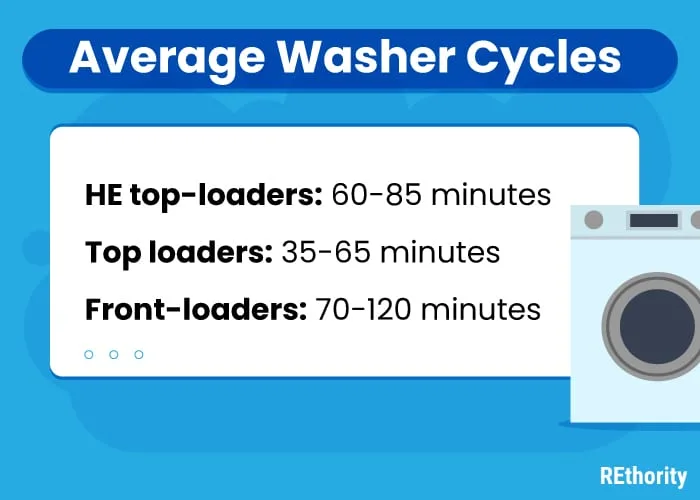
On average, a typical wash cycle takes anywhere from 50 minutes to an hour to finish. This is dependent on several factors, like the load size, additional settings selected (like deep clean or extra rinse), and wash cycle choice (like bulky or large load).
But for an average load of regular laundry, you’re looking at close to an hour for a wash cycle to complete. If the washer you’re looking at takes much longer than that, you’ll be better off choosing one that runs through the cycle faster.
In almost all cases, top-load washers run faster cycles than front-load washers. According to consumer reports, the normal cycle with a heavy soil setting activated takes:
- HE top-loaders: 60–85 minutes
- Top loaders: 35–65 minutes
- Front-loaders: 70–120 minutes
Keeping the wash cycle time in mind will help you narrow your choice down to a front-load, HE top load, or regular top load washing machine.
How Long Is a Dryer Cycle?
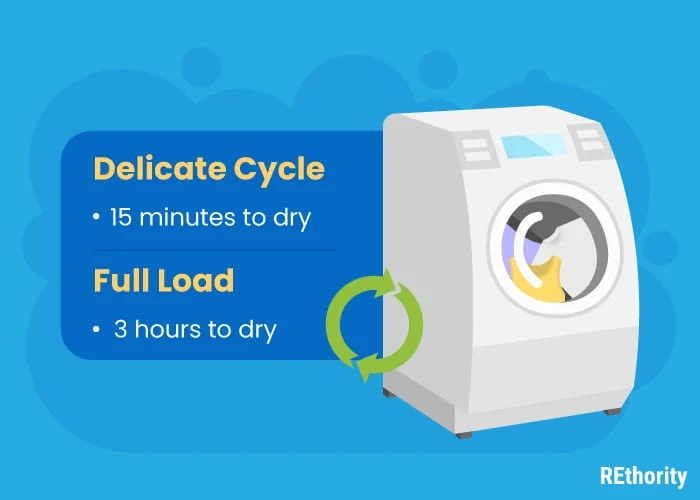
Dryer cycles take about 45 minutes to complete, depending on several factors. The load size, contents of the load (for example, towels take longer), dryer setting, heat source (gas vs. electric), and how wet the load is when it goes in.
Delicates take much less time to dry, with an average 15-minute dryer cycle. A full load of towels, on the other hand, could take nearly 3 hours to dry completely on the high heat setting. This is one area of dryer shopping where your washing machine choice is extremely important.
A quality washer with a high spin speed will leave your laundry much drier as it comes out of the wash. That translates into less drying time. Gas dryers dry clothes and items faster than electric models.
This is because they reach a higher heat level much quicker than an electrical heating element can. If fast dryer cycles are important to you, you might consider opting for a gas model.
Examine the Cost
The cost of a washing machine or dryer is undoubtedly one of the most important factors to think about when you’re looking for a new one.
You know your budget, but you might be wondering how much these appliances cost on average. Here’s some information on the cost of washing machines and dryers.
How Much Does a Washing Machine Cost?
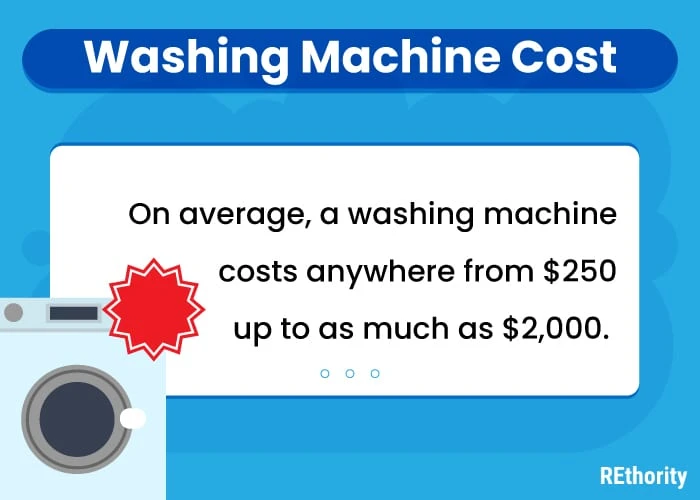
A washing machine’s cost is extremely variable based on the brand, type (front or top load), features and cycles, capacity, and more. On average, a washing machine costs anywhere from $250 up to as much as $2,000.
At the low end of the cost scale (starting at about $250), there are basic top-loading washers with limited settings. These can be a good choice if you’re sticking to a tight budget and want to ensure you find a highly-rated model.
In the middle of the cost scale are high-efficiency (HE) top-loading washers with more wash cycles and setting options. These are closer to the $400–$600 range. At the high end of the pricing scale are the modern front-loading washers with tons of special wash cycles and settings.
Some of these are connectivity-enabled smart washers that allow remote control and monitoring from your smartphone or voice control device. These are typically in the $700 to $2,000 range.
How Much Does a Dryer Cost?
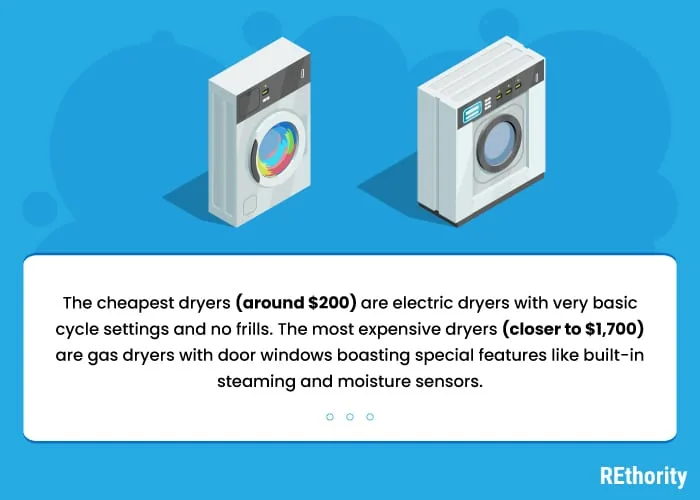
Dryer costs range from about $200 to as much as $1,750. The overall cost depends on the brand, features and cycles, capacity, heat source, and more. Gas dryers are about $100 more expensive than electric dryers on average, but they do cost less to operate.
The cheapest dryers (around $200) are electric dryers with very basic cycle settings and no frills. The most expensive dryers (closer to $1,700) are gas dryers with door windows boasting special features like built-in steaming and moisture sensors.
What’s the Best Washer and Dryer?
We hope that we’ve broken down the best washer and dryer models for you. While there are many options available, we’ve listed some of our favorites to make your search a little easier.
Be sure to let us know which one you ended up going with! And while you’re here, check out our other guides. We’re sure that you’ll learn something new.

